Lab created and synthetic emerald gemstones have been gaining popularity as natural emerald alternatives, but are they really “worth it”?
We’ve discussed why we only work with natural diamonds and do not recommend lab-grown diamonds to our clients, but what about emeralds?
What are synthetic emeralds?
Synthetic emeralds, also referred to as lab-grown emeralds or created emeralds, are produced in controlled laboratory environments.
While they are considered “real” emeralds, they are not considered natural.
These synthetic gems are created through a process that simulates the geological conditions under which natural emeralds are generated over millions of years. By replicating these conditions in a controlled setting, scientists and gemologists can grow crystals that closely resemble the physical and optical properties of natural emeralds.
The process of creating synthetic emeralds involves introducing specific mineral elements, such as beryllium and aluminum, into a growth solution that contains the necessary chemical components. Over time, crystals form as these elements crystallize, producing gem-quality emerald crystals. Advanced techniques and technologies have led to the production of synthetic emeralds that closely mimic the appearance of their natural counterparts. Despite lab-grown emeralds’ vibrant green colors and impressive clarity, the allure and unique features of natural emeralds cannot be truly replicated in a lab.
Environmental Impact of Lab Emeralds
While lab-grown emeralds may have a smaller ecological footprint than natural emeralds, which have negative environmental impacts, including habitat destruction and the use of harmful chemicals, we always note that antique or vintage gemstones are the most ethical and environmentally conscious option for our clients.
Appearance
In terms of appearance, synthetic emeralds can be indistinguishable from natural emeralds to the naked eye. Although advanced techniques have enabled manufacturers to produce gemstones with exceptional clarity and color, closely resembling the vibrant green hues characteristic of high-quality natural emeralds, these lab-grown gems visibly lack the natural inclusions, charm, and individuality found in natural emeralds. The inclusions and unique imperfections found in natural emeralds are a testament to their formation deep within the earth's crust over millions of years, each telling a story of its own creation.
Synthetic emeralds, by contrast, are devoid of this storied journey, presenting a mere imitation without the depth and character that genuine emeralds embody. Synthetic emerald inclusions tend to appear more uniform and systematic, whereas mined emerald inclusions patterns are more organic, reflecting the beauty and chaos found in nature.
Inclusions in Synthetic Emeralds:

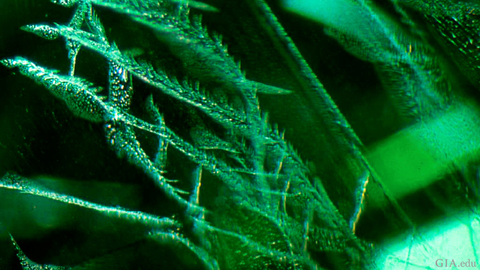
Healed whitish feather-like inclusions of flux residue are present in this Gilson synthetic emerald. Field of view 4.75 mm. Photomicrograph by GIA staff.
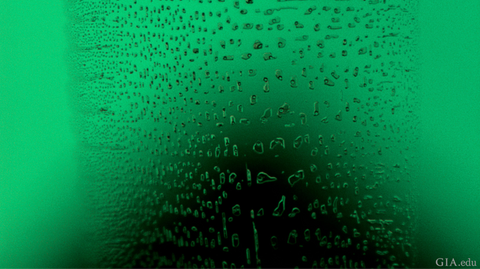
Flux residue often contains a contraction bubble, as seen in each of these trapped flux droplets. Field of view 1.08 mm. Photomicrograph by GIA staff.
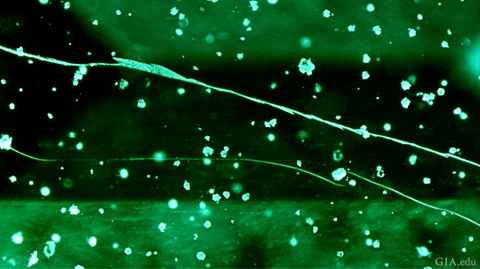
Synthetic phenakite crystals are often a by-product of synthetic emerald growth and can easily be mistaken for natural inclusions. Field of view 2.90 mm. Photomicrograph by GIA staff.
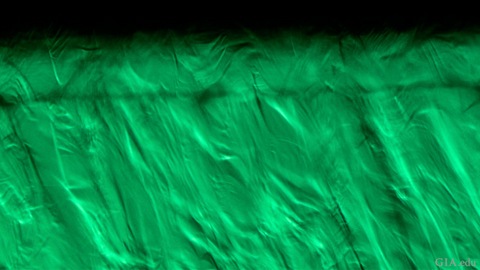
Are lab created gemstones worth anything?
Due to their scarcity and historical significance, high-quality natural emeralds are some of the most expensive gemstones. Lab created emeralds are more accessible and affordable than natural emeralds, offering similar aesthetic qualities, but they do not hold nearly as much value as natural emeralds.
The inherent value and investment potential of natural emeralds far outweigh that of their synthetic counterparts. Natural emeralds, with their historical and cultural significance, rich colors, and limited supply due to geological rarity, have stood the test of time as treasured possessions and symbols of luxury. Their scarcity contributes to their enduring worth as heirlooms and investments for collectors and enthusiasts. Synthetic emeralds, however, are produced in abundance within controlled laboratory settings, causing their market value to remain relatively stagnant over time and lacking the allure of true exclusivity and legacy.

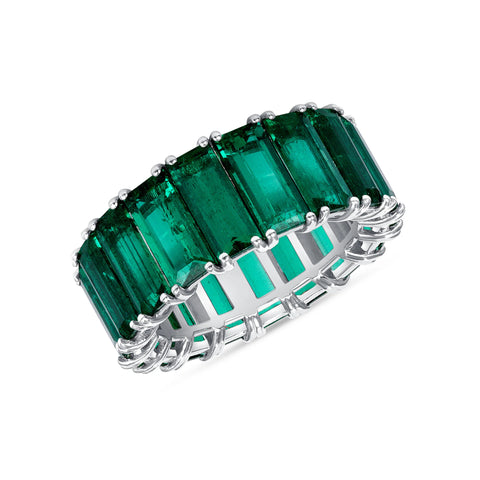
Natural Emerald Baguette Eternity Band
Why are natural emerald gemstones valuable?
Natural emeralds hold a place of exceptional value within the world of gemstones, owing to a confluence of factors that make them truly unique and desirable. Their value can be attributed to their rarity, captivating beauty, rich history, and cultural significance.Rarity
Rarity is a defining attribute that drives the value of natural emeralds. These gemstones are not easily found in nature, requiring specific geological conditions and a precise combination of elements to form. The scarcity of these conditions limits the occurrence of high-quality emerald deposits, making genuinely remarkable specimens a true rarity. As they become even scarcer due to mining limitations and increased demand, their value is likely to continue rising, making them a worthy investment.

Color
The breathtaking color of natural emeralds is another key factor in their value. The mesmerizing green hue, often described as "emerald green," is a result of trace amounts of chromium and vanadium within the crystal structure. This unique color captures the essence of nature's beauty and symbolizes growth, renewal, and vitality. The depth and intensity of the green color can significantly impact the gem's value, with intense and vivid hues fetching higher prices.
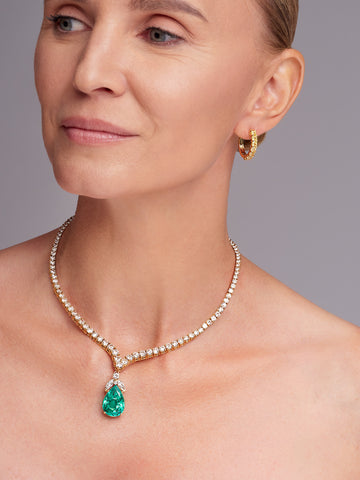
Individuality and Character
Inclusions, referred to as a "jardin" or “garden” due to their resemblance to moss and foliage, are yet another facet that contributes to the allure and value of natural emeralds. These inclusions can create captivating visual effects known as the "silk" that adds to their mystique and authenticity. Unlike most gemstones where clarity is prized, emeralds' inclusions are considered a defining characteristic.
These internal imperfections create a distinctive visual texture that can be used as identification, as no two natural emeralds have identical inclusion patterns. Various types of inclusions are caused by the stone’s interactions with the different elements found deep in the earth, which means that inclusions help gemologists locate the origin of an emerald.
Inclusions in Natural Emeralds:
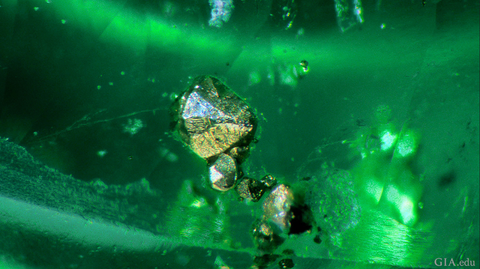
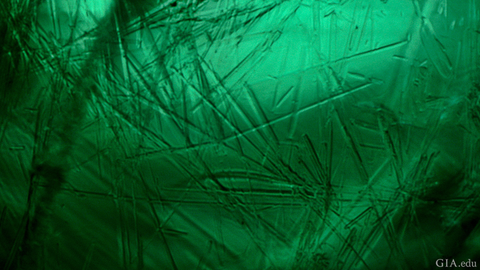
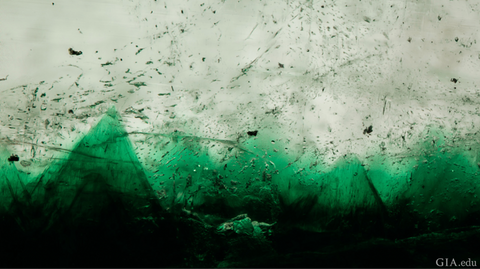
This Colombian emerald shows prominent angular color zoning reminiscent of a mountain range. Field of view 14.52 mm. Photomicrograph by GIA staff.
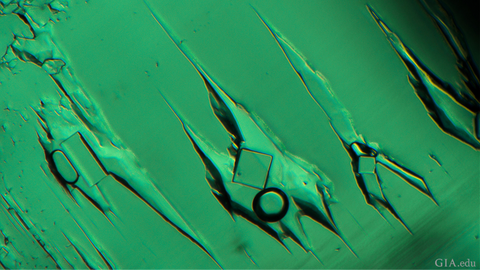
Jagged three-phase inclusions consisting of salt solution, a gas bubble, and a salt crystal are commonly seen in Colombian emeralds. Field of view 0.91 mm. Photomicrograph by GIA staff.
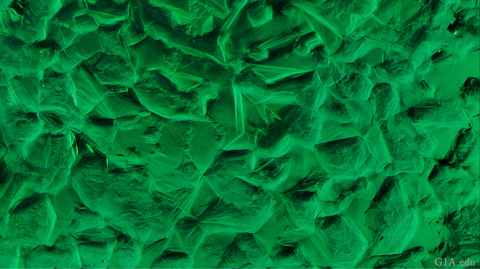
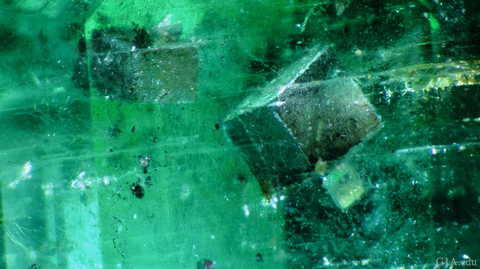
Several rhombohedral magnesite crystals are present in this emerald from Santa Terezinha de Goiás, Brazil. Field of view 8.68 mm. Photomicrograph by GIA staff.
Such intricate and unique inclusions cannot be replicated in synthetic emeralds, which is one of the ways that gemologists distinguish natural from lab-grown.

Historical Significance of Emerald Gemstones
Throughout history, emeralds have been cherished by various civilizations, such as the Egyptians, Incas, and Persians, for their association with spirituality, healing, and status. They have adorned the crowns of kings and queens, symbolizing power and wealth. This historical context adds an extra layer of fascination and prestige, fueling their demand among those who appreciate the deeper meanings behind gemstones.Certification of Authenticity
A certification of authenticity makes all the difference in a natural gemstone’s value. An uncertified emerald, or any other type of stone, has no proof of natural origin, which instantly devalues the gemstone and its resale value. At Brandon Boswell Diamonds, all of our natural gemstone and diamond jewelry has been certified, and a certificate of authenticity accompanies all gemstone or diamond purchases.Final Thoughts
Owning a natural emerald is a mark of exclusivity and luxury. The limited supply and the stringent standards for evaluating their quality make them an exclusive choice for those seeking a gemstone that truly captivates. The combination of rarity, exquisite color, unique inclusions, and rich history makes a certified natural emerald an exceptionally valuable heirloom and timeless investment.
Learn more about natural and synthetic emerald inclusions: https://www.gia.edu/gems-gemology/winter-2016-inclusions-natural-synthetic-treated-emerald






